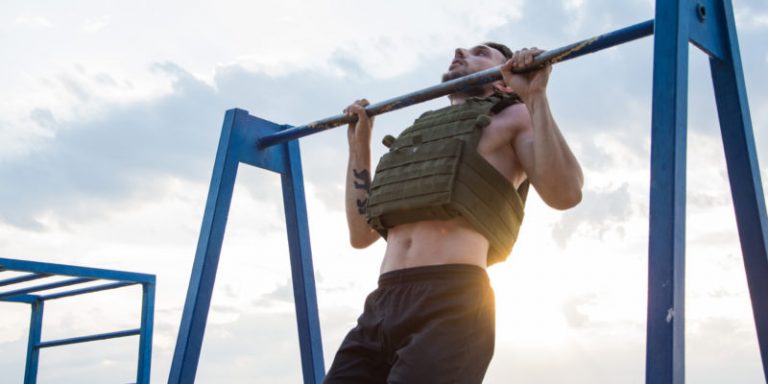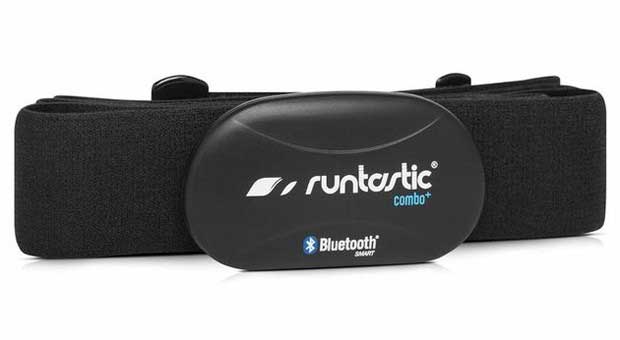How Much Should I Be Able to Squat? – Discover Your Squatting Potential
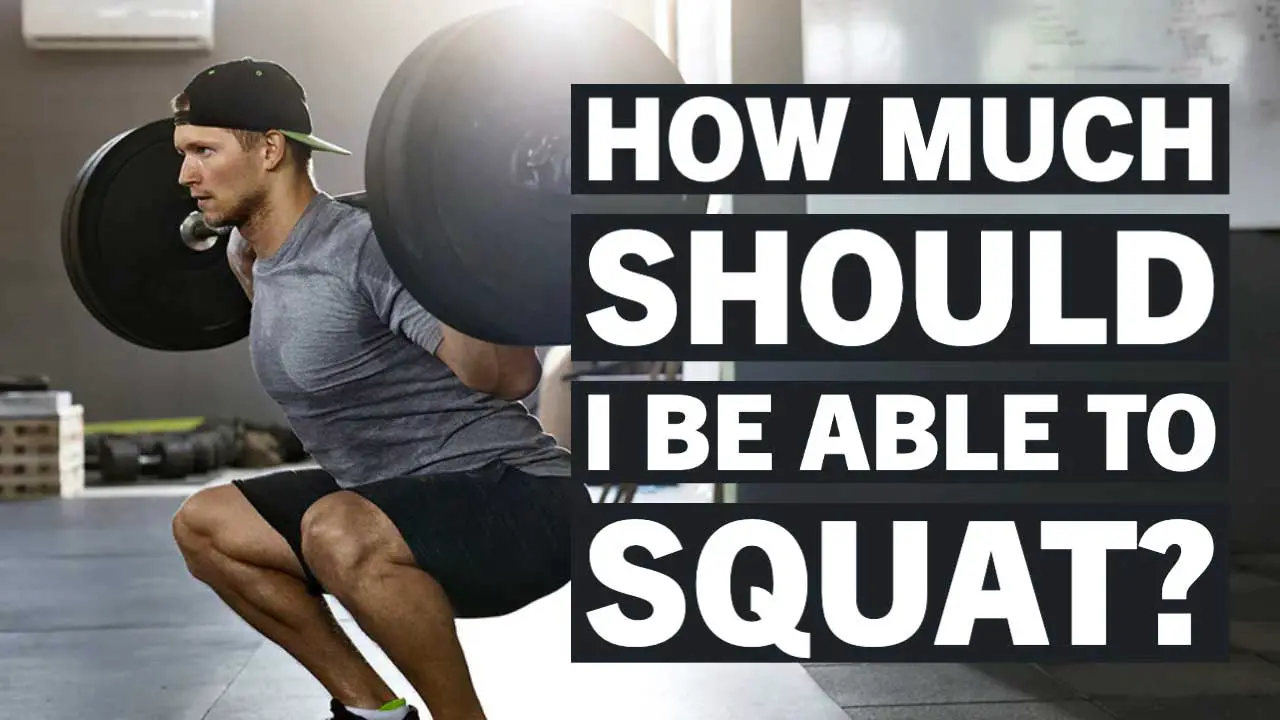
ListedFit is reader-supported. When you buy through links on our site, we may earn a small commission.
Squats are a popular and efficient exercise for strengthening the lower body, but it’s important to know how much weight you should be able to lift when doing this exercise.
According to a person’s weight, this article will offer a general recommendation for how much squatting they should be able to do. The recommendation will be given as a broad estimate.
We’ll also discuss common mistakes you should try to avoid, as well as techniques you can use to get better.
Table of Contents
How Much Should I Be Able to Squat for My Weight?

Because the amount you should be able to squat is determined by a number of different factors, there is no one size fits all answer to this question. On the other hand, the vast majority of people should be able to squat with the correct form for a number of repetitions while lifting at least their own body weight.
How do you calculate how much a person should be able to squat?
You can determine how much weight you should be able to squat based on your weight by using any one of a number of different formulas or calculators that are available online.
One popular formula to calculate your one rep max is the Epley formula, which is:
Squat weight = weight lifted x (1 + reps/30)
For example, if you weigh 150 pounds and can squat 10 reps at 100 pounds, your estimated one-rep max using the Epley formula would be:
Squat weight = 100 x (1 + 10/30) = 133 pounds
Use the calculator below to find your one rep max.
It is important to keep in mind that the results of these formulas should only be regarded as estimates and not as a hard and fast rule.
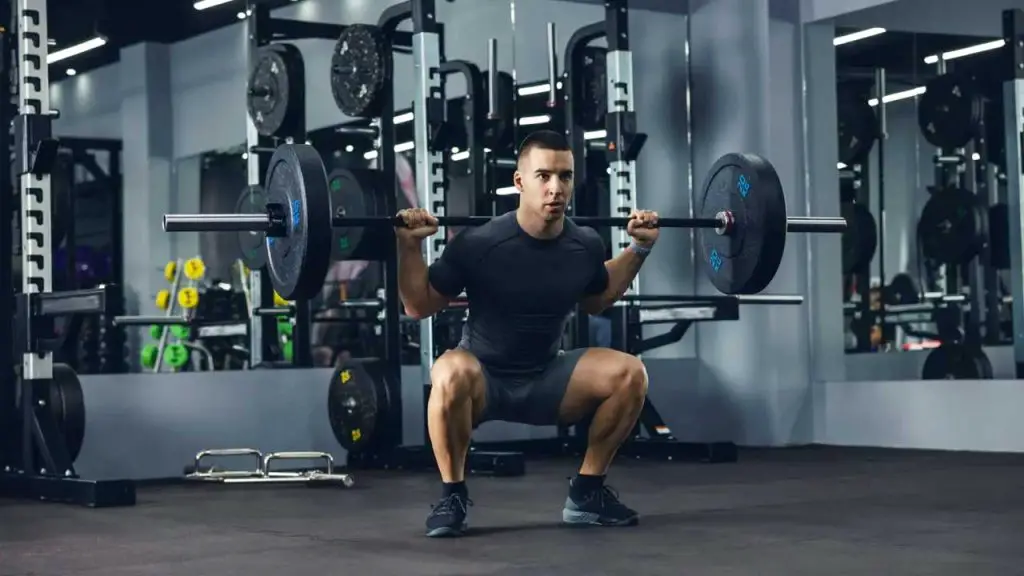
How Much Can the Average Person Squat?
When using proper form, a man of average size can squat approximately 125 pounds for a single repetition.
However, this will change depending on aspects such as a person’s age, weight, and overall level of physical fitness.
Is a 2x Bodyweight Squat Good?
It is generally accepted that squatting twice one’s body weight is a very good amount of weight to lift.
However, this will depend on the fitness level you currently possess as well as the goals you have for yourself. A squat of twice your body weight is an ambitious but attainable goal for the vast majority of people.
What Is a Respectable Squat?
A squat is considered respectable when it is difficult to perform but can still be done so with proper form. Before attempting to increase the weight, the majority of people should first work toward squatting at least their body weight for multiple reps while maintaining proper form. This should be the goal.
Does It Matter If I Use a Weightlifting Belt to Squat or Not?

Do I Need to Use a Weightlifting Belt to Reach a Respectable Squat Number or Can It Be Achieved Without a Belt?
You don’t have to use a weightlifting belt in order to achieve a respectable squat number; however, using one can assist in providing support for your lower back and improving your form.
When performing squats, whether with or without the use of a belt, it is essential to maintain correct form and gradually increase the weight.
What Are the Pros and Cons of Using a Weightlifting Belt?
Weightlifting belts are commonly used by powerlifters and bodybuilders to provide extra support and stability during heavy lifting. While they can be helpful, they also come with their own set of pros and cons.
Pros of Using a Weightlifting Belt:
- Increased stability: Wearing a weightlifting belt can help increase intra-abdominal pressure, which can provide extra stability to the spine and lower back during heavy lifts.
- Injury prevention: A weightlifting belt can help prevent injuries, particularly to the lower back, by providing extra support and reducing the risk of strains and sprains.
- Increased confidence: Wearing a weightlifting belt can increase confidence and allow lifters to feel more secure during heavy lifts, which can lead to better performance and progress.
Cons of Using a Weightlifting Belt:
- Dependency: Relying too heavily on a weightlifting belt can actually weaken the core muscles over time, which can increase the risk of injury when lifting without the belt.
- Limited range of motion: Wearing a weightlifting belt can restrict the range of motion in the core and midsection, which can affect overall form and technique during lifts.
- Incorrect usage: If not worn correctly, a weightlifting belt can actually cause more harm than good by placing too much pressure on the wrong areas of the body.
Overall, weightlifting belts can be a useful tool for lifters who are performing heavy lifts and want extra support and stability. However, it’s important to use them correctly and not rely too heavily on them, as they can also have some downsides. It’s always a good idea to consult with a trainer or coach before incorporating a weightlifting belt into your routine.
What Are the Best Kinds of Shoes to Wear for Squats?
Do I Need to Buy Special Weightlifting Shoes?
When it comes to choosing the right shoes for squats, it’s important to consider the stability and support they provide. While it’s not necessary to buy special weightlifting shoes for squats, they can be helpful for those looking to take their squatting to the next level.
Weightlifting shoes typically have a raised heel and a firm sole, which helps to keep your feet stable and grounded during the squat.
Are Converse Chuck Taylors a Good Shoe for Squats?
Many find that their squat performance improves when they switch to a shoe like the Converse Chuck Taylors. These shoes have a flat, non-slip sole that provides a good grip on the ground. Because of this, they are an excellent choice for maintaining stability while performing squats and deadlifts also.
On the other hand, they do not have a raised heel, which can make it somewhat more challenging to squat to the appropriate depth when wearing them.
If you’re serious about enhancing your squat technique, however, it may be worth your while to make an investment in a good pair of weightlifting shoes.
While they are a good choice for those who are just starting out or who are on a tight budget, weightlifting shoes offer a number of benefits that can help improve your squat technique.
What Are the Best (Proven) Programs to Increase Squat?
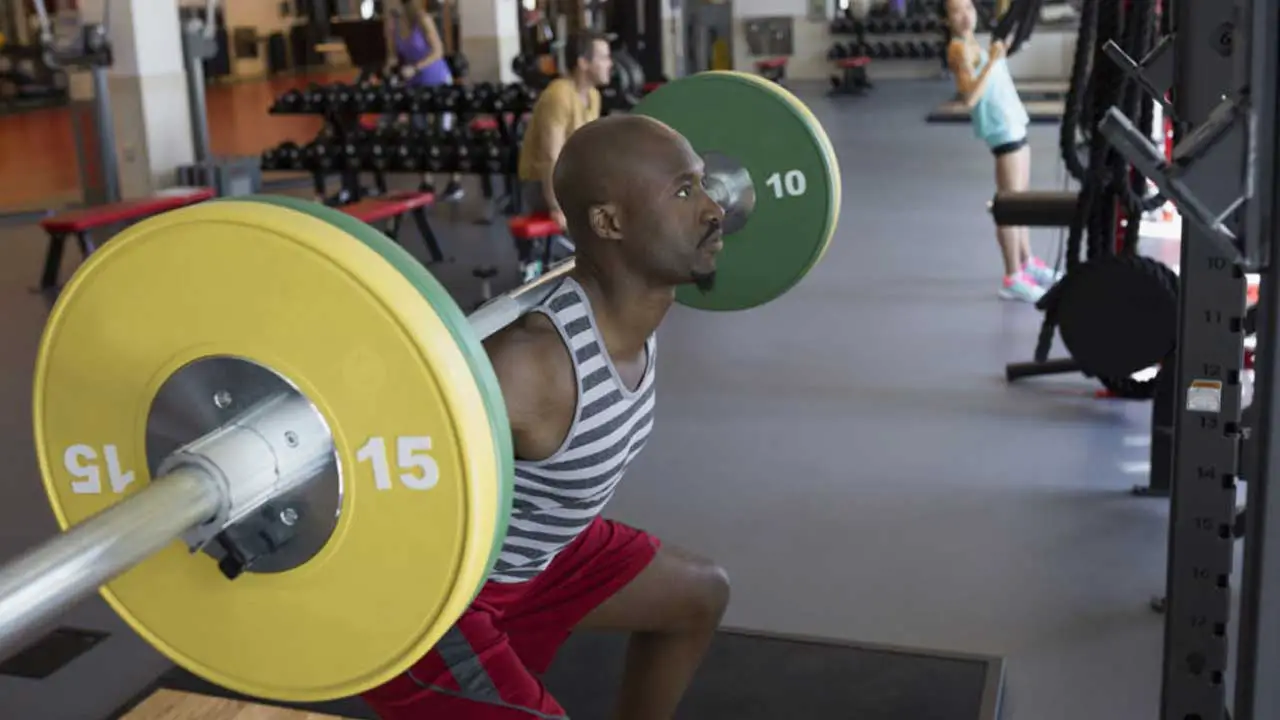
There are many different training programs and training methods available to choose from if you want to improve your squat strength. The following are the top three programs that have been shown to be effective in helping to increase squat strength:
* Starting Strength: This program is geared toward novices who want to concentrate on developing their squat, bench press and deadlift strength. The foundation of the program is performing three sets of five repetitions for each exercise, and then gradually adding more weight each week. Many weightlifters have reported significant increases in their squat strength after participating in the Starting Strength program. This is due to the fact that the program is an excellent way to build a solid foundation of strength.
* Stronglifts 5×5: This program is comparable to Starting Strength in that its primary emphasis is placed on the squat, bench press, and deadlift exercises. Stronglifts 5×5 includes a greater total volume of work, with 5 sets of 5 reps for each exercise in the program. In order to reduce the risk of injury and break through any plateaus that may have been reached, the program incorporates a deload week every fourth week. Stronglifts 5×5 has been very successful for many lifters, especially those lifters who have reached a point of stagnation with other training programs.
* Smolov Squat Program: This program is not for those who are easily discouraged, but it is extremely efficient for increasing squat strength. The total duration of the program is thirteen weeks, and it features a variety of squat workouts that range from high volume to high intensity. The program is intended to push your limits and assist you in breaking through plateaus. However, the program can be very difficult and should only be attempted by experienced lifters who are already comfortable with performing heavy squats.
Your individual goals, current level of experience, and current physical abilities will ultimately determine which program is the best fit for you. In order to see results, it is critical to select a program that is suitable for you and to maintain a consistent commitment to using that program
What Are Some Common Mistakes to Avoid When Squatting for a Beginner?
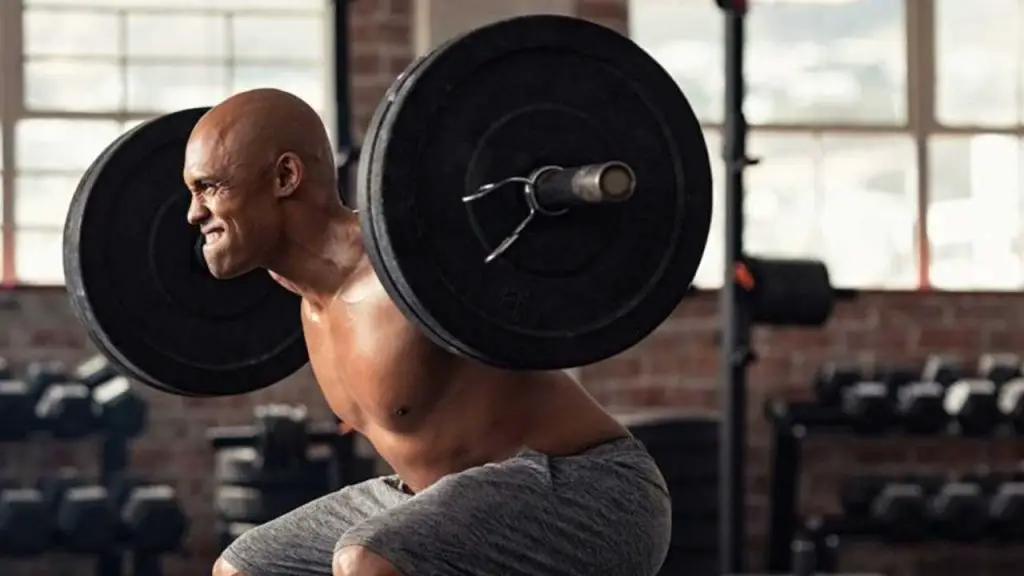
Beginners should be aware of a number of common mistakes in order to avoid injury and get the most out of their squatting workouts. These mistakes are similar to those that are made when performing other types of exercises. Consider the following as some of the most vital things to keep in mind:
Improper form: Squatting without the appropriate form is one of the most common and serious errors that beginners can make. This can include leaning too far forward, rounding the lower back, or not going low enough. Also not going low enough. To minimize the risk of injury and maximize the benefits of your workouts, it is essential to use the correct form from the very beginning of your training.
Not warming up properly: When performing squats, many people make the mistake of not properly warming up first. This is a big mistake. In order to prevent injuries and get your body ready for the workout, it is essential to warm up your muscles and joints by performing some light cardio exercises and dynamic stretching.
Starting with too much weight: When they first begin squatting, many beginners make the mistake of beginning with an excessive amount of weight. It is important to start with a weight that you are able to control comfortably and then gradually increase that weight as you become more used to squatting.
Neglecting mobility work: To properly squat, you need to have a good range of motion in your hips, knees, and ankles. Skipping mobility work puts you at risk for injury and will slow down your overall progress. It is essential to include mobility exercises as part of your routine in order to increase your range of motion, which will ultimately help you avoid injury.
Holding your breath: Holding your breath while squatting is another mistake that people frequently make. This can cause a rise in blood pressure, which in turn can lead to lightheadedness or even fainting. During the exercise, it is essential to maintain correct breathing, inhaling as you go down, and exhaling as you go back up.
Not keeping the core tight: Maintaining a strong core can assist in the stabilization of the spine and the prevention of injury. It is essential to activate your core muscles both before beginning the squat movement and while you are performing it. Taking a slow, deep breath and tensing up your abdominal and core muscles as if you were getting ready to take a punch to the gut is one way to accomplish this goal.
Too much squatting: Squatting places a significant amount of strain on the body and, if performed excessively frequently or for an extended period of time, can increase the risk of overtraining and injury. It is essential to allow your body time to rest and recuperate in between sessions of squatting.
Beginners can safely and effectively improve their squat technique and strength by avoiding these common mistakes.
How Can I Improve My Squat Technique?
Improving your squat technique is critical for getting the best results and staying injury-free. Here are some squat technique tips to help you improve:
Practice proper form: Maintaining correct form throughout the duration of the exercise should be your primary focus. This includes ensuring that your back remains in a neutral position, that your knees remain in alignment with your toes, and that your feet remain firmly planted on the ground.
Foot placement: Experiment with a variety of foot placements to determine which one is most beneficial for you. Some people favor taking a wider stance, while others favor taking a more narrow one.
Use a mirror: You can check to see if your form is correct by using a mirror, which will allow you to make any necessary adjustments. Many gyms have strategically placed mirrors for this exact purpose, try to bear this in mind next time you begin your workout.
Film yourself: You can check to see if your form is correct and make any necessary adjustments by recording yourself squatting and watching the video later.
Work on your flexibility: Having adequate flexibility is absolutely necessary for correct squat form. In order to improve your flexibility, you should concentrate on stretching your hips, hamstrings, and ankles regularly.
Do I Need to Hire a Personal Trainer as a Beginner?
When you are just starting out with exercise, it is not required that you hire a personal trainer; however, doing so may be beneficial in ensuring that you have the correct form and technique.
A personal trainer can look at you and your lifestyle and assist you better in creating an individualized workout plan as well as provide direction regarding how to advance your squats over the course of time.
Hiring a personal trainer can be a worthwhile investment if you are unsure about your form or have certain objectives in mind for your workouts.
On the other hand, there are a plethora of resources that can be found either on the internet or in printed books that can provide direction on the appropriate squat technique as well as training programs.
It is truly up to you to determine which could be of greater use to you in the long run.
Conclusion – How Much Should I Be Able to Squat?
Squats are one of the best exercises for increasing both your strength and your muscle mass. You can achieve impressive results and accomplish your fitness goals if you pay close attention to your form, make sure you have the appropriate equipment and footwear, and steer clear of making common errors.
There is always room for improvement, and if you have the right mindset and are dedicated, you can take your squats to the next level.
Author
Latest entries
 GearJuly 20, 2024Headphones and Earbuds – Tried and Tested!
GearJuly 20, 2024Headphones and Earbuds – Tried and Tested! FitnessAugust 19, 2023Yohimbe vs Yohimbine: A Quick Comparison Guide
FitnessAugust 19, 2023Yohimbe vs Yohimbine: A Quick Comparison Guide AshwagandhaJune 16, 2023Is Ashwagandha Good for Working Out? Key Benefits Explored
AshwagandhaJune 16, 2023Is Ashwagandha Good for Working Out? Key Benefits Explored Sports HeadphonesMay 25, 2023Why Your EarBuds Keep Falling Out – Quick and Easy Solutions
Sports HeadphonesMay 25, 2023Why Your EarBuds Keep Falling Out – Quick and Easy Solutions
Affiliates:
This post may contain affiliate links that at no additional cost to you, the site may earn a small commission. We only recommend products we would use ourselves and all opinions expressed on this site are our own.
General Advice:
The information provided in this article is for general informational purposes only. It is not intended as a substitute for professional advice. Always consult with a qualified healthcare professional before starting any new diet, exercise program, or making changes to your health routine.
Accuracy Advice:
While we strive to provide up-to-date and accurate information, the content in this article may not reflect the most current research or medical guidelines. We encourage readers to do further research and consult with professionals for more personalized advice.
Our Recommendations:
The products and services mentioned in any of our articles are recommended based on our independent research and personal experience. We are not sponsored by any company. We aim to suggest products and services we believe are of high quality and could be beneficial to our readers.


